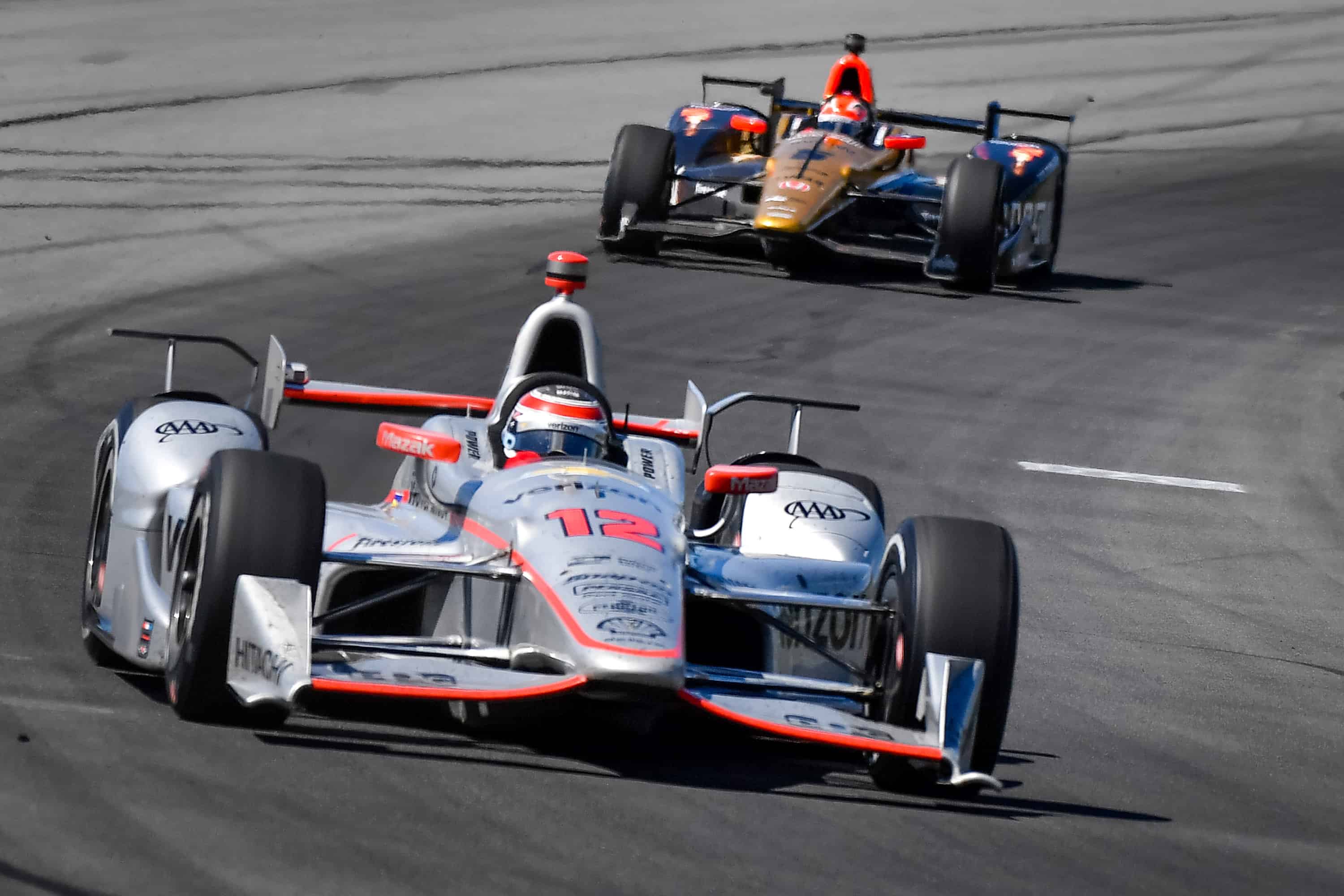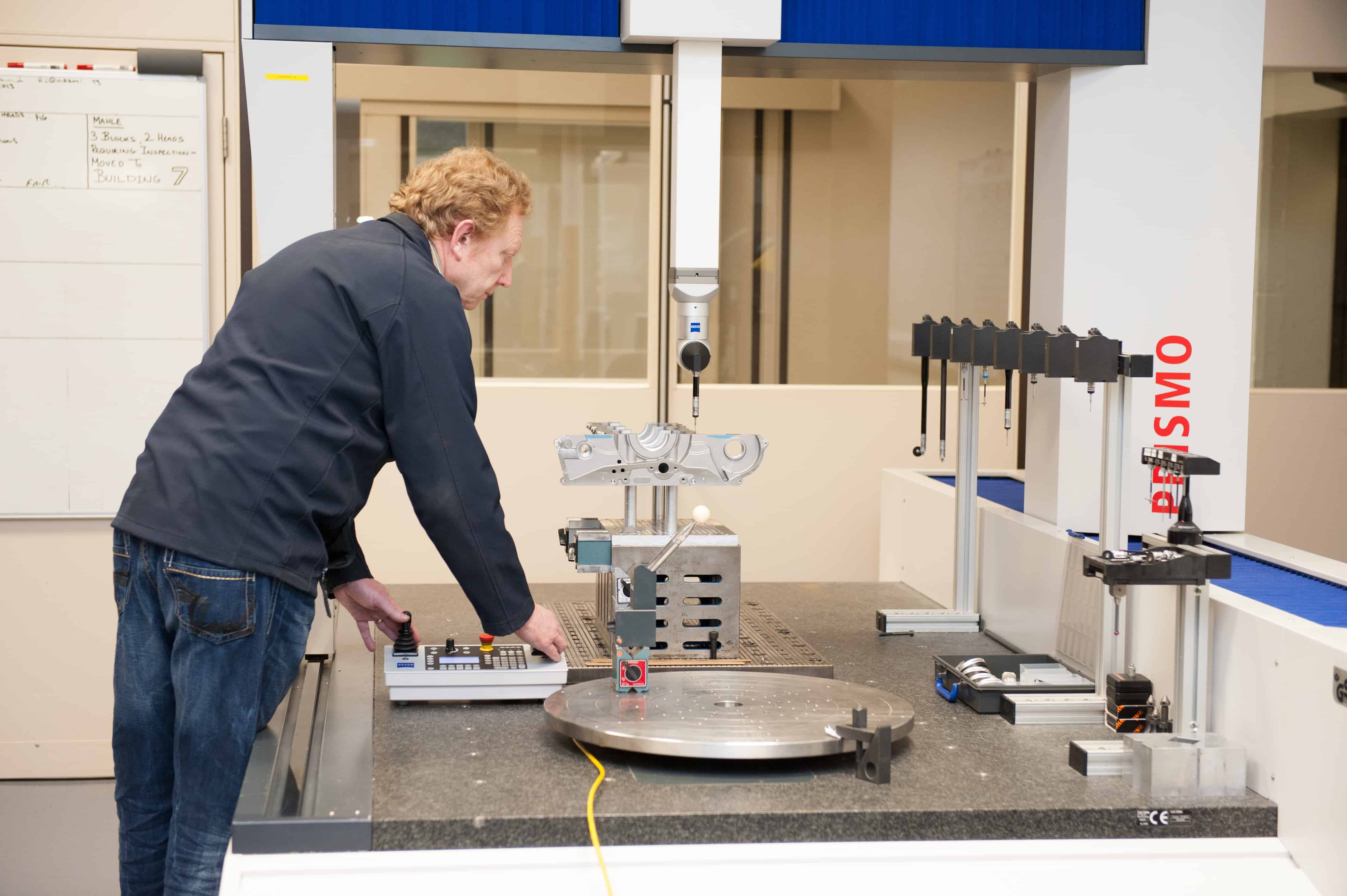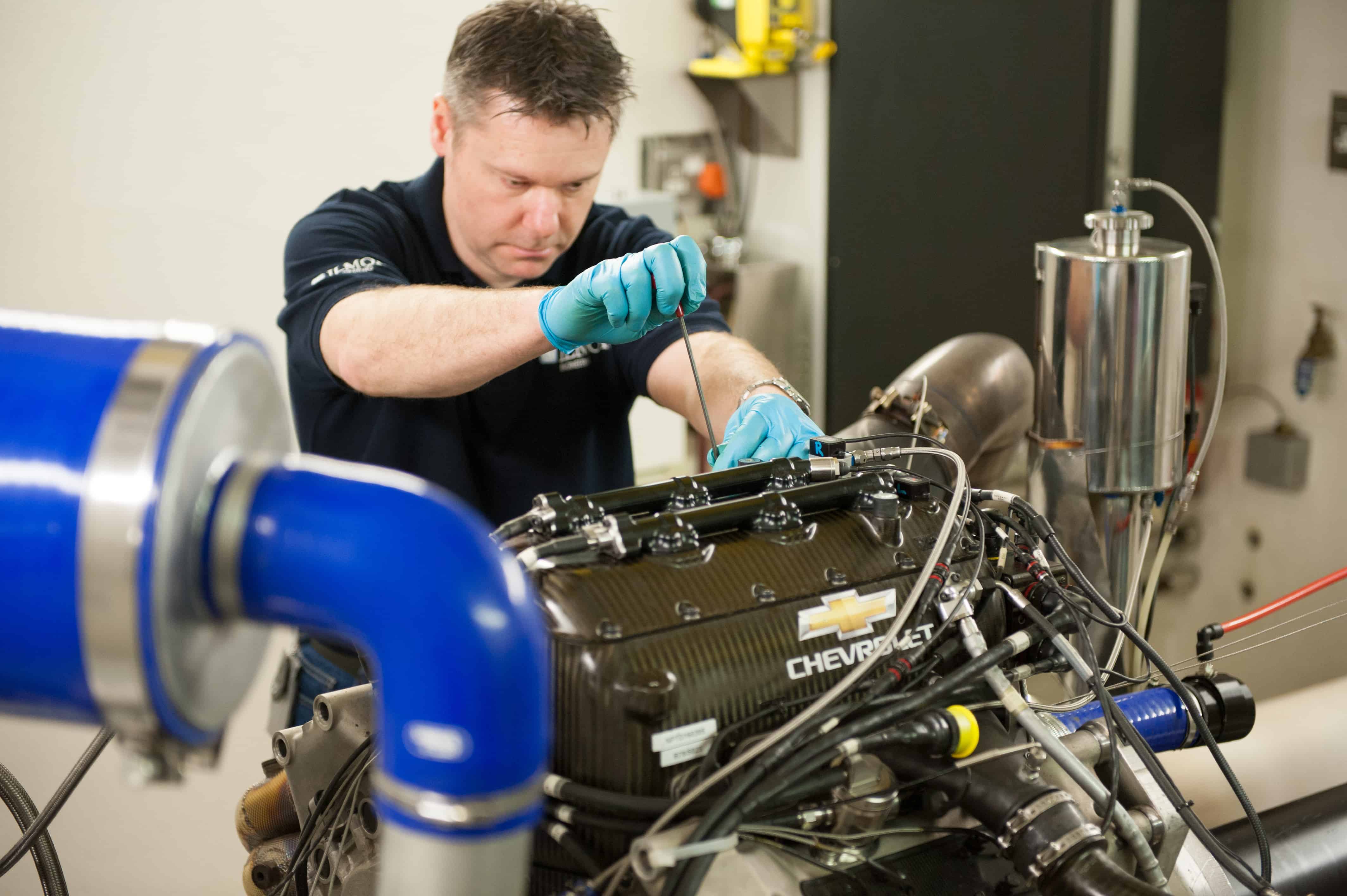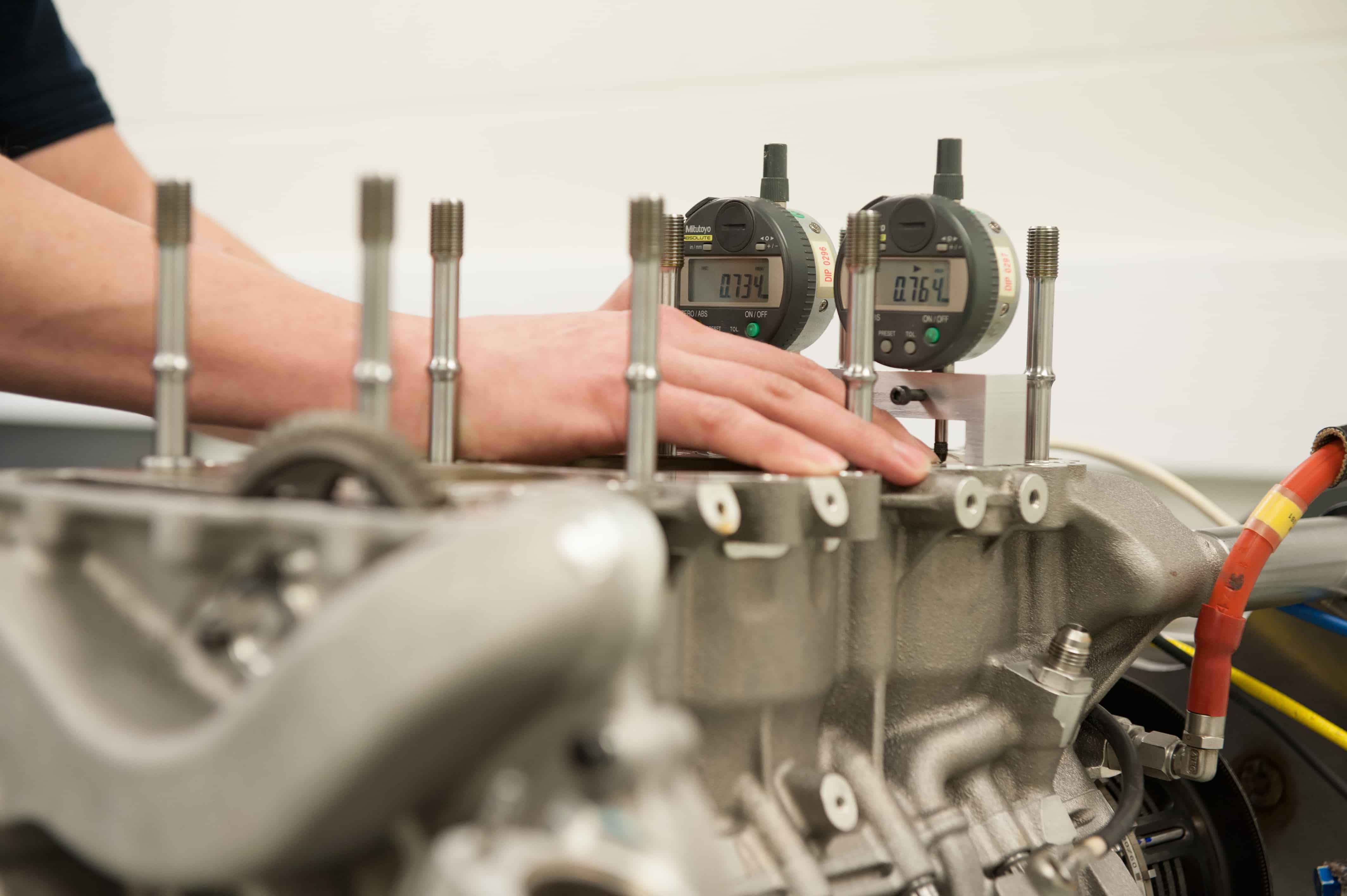In deepest Northamptonshire, one of motorsport’s greatest names is blending traditional engineering knowhow with state of the art simulation techniques, Chris Pickering discovers

Driving round the outskirts of Brixworth you wouldn’t necessarily know it was a place of global significance. But this unassuming corner of Northamptonshire marks the northern tip of Motorsport Valley – the strip of central and southern England that’s home to some 75 per cent of the world’s top-level motorsport R&D companies.
In many ways, Ilmor Engineering typifies this industry. Based in a quiet industrial estate on the eastern edge of the village, it’s responsible for engines that have dominated the likes of Formula One and IndyCar yet you’d hardly know it was there. It’s also evolving; embracing new techniques and moving into neighbouring industries such as aerospace and defence.
Ilmor can trace its roots back to another great UK motorsport institution. Company founders Paul Morgan and Mario Illien met while they were working as engineers at Cosworth, just down the road in Northampton. They hatched a plan to produce their own engines and founded Ilmor in partnership with US motorsport mogul Roger Penske in 1984.

Initially, the company focused on the IndyCar series – a quintessentially American form of racing where British companies have had a defining impact ever since Lotus showed up in the 1960s. This remains a hugely important market for Ilmor, which produces the Chevrolet engines used in around half the current grid.
Elsewhere, the company retains a significant presence in Formula 1. Back in the late nineties it engineered the McLaren-Mercedes V10s that powered Mikka Hakinnen to his back-to-back F1 World Championships. This was the continuation of a fruitful partnership with Mercedes-Benz, which had begun with a phenomenally successful IndyCar engine earlier that decade. It culminated in 2005 when the German giant completed a buyout of the company and created Mercedes-Benz High Performance Engines.

Paul Morgan, a keen collector of historic aircraft, was killed in 2001 when his Hawker Sea Fury overturned on landing. Following the buyout, however, his fellow co-founders bought the non-F1 parts of the business back from Mercedes, along with the Ilmor name. The two companies now face each other – literally – over the road, but they’re completely independent. They even compete against each other on the track, albeit indirectly with Ilmor carrying out behind the scenes work for a well-known F1 team.
Throw in a liberal sprinkling of NASCAR, World Rally Championship and GT racing projects and you have one of the most versatile – and active – motorsport powertrain companies in the world. Even so, it pays to diversify.
“Motorsport is good when it’s good, but it can be quite seasonal,” explains Ian Whiteside, chief engineer for Ilmor’s Advanced Projects group. “We need cutting edge facilities with plenty of capacity to support our racing programmes, but we also need to ensure there’s enough work to keep them busy during the off-season. We try and fill that with racing parts for external companies, along with prototype work for other industries like automotive OEM, aerospace, defence and marine.”
These facilities include a state of the art machine shop, a comprehensive metrology suite and just about every conceivable powertrain testing rig. The building is home to no less than seven different engine dynamometers, including a 20,000 rpm F1 dyno designed and built in-house. Elsewhere, there are more than half a dozen smaller rigs that cater to sub-assemblies and specific components, ranging from valvetrain parts to fuel injectors.
Embracing the digital domain
Ilmor is a company that places huge emphasis on empirical testing, but the past few years have also seen a dramatic increase in the amount of simulation work carried out. In particular, the company has invested significantly in its CFD capabilities, with the addition of a new 32-core computing cluster and a dedicated in-cylinder combustion modelling package.
“Historically we’ve relied heavily on physical testing, usually starting off with a handful of port designs on the flow bench,” Whiteside explains. “In recent years we’ve used rapid prototyping to speed things up, but essentially we’d still pick a handful of RP parts that looked promising on the rig and then manufacture them in metal to test them on the dyno. There’s only a finite number of parts that you can try with this approach and it does get quite expensive.”

Aside from the cost constraints, there’s also a fundamental limitation on how much information you can glean from physical testing, he says: “Charge motion is vital to understanding combustion. We do have the facility to measure turbulence on our flow rig and we have an injector rig where we can look at spray patterns with a high speed camera, but these static tests are never truly representative of the real engine. Likewise, while you can measure the results on the dyno that doesn’t necessarily help you to understand the physics that’s produced the effect. In simulation, however, you can look at the root cause.”
While external CFD is more or less universal in motorsport, in-cylinder combustion modelling is still a relatively new field. Modelling the ports on their own creates similar limitations to flow bench testing; even if the correlation is perfect between the CFD and the rig, it doesn’t necessarily reflect what’s happening in the real engine. On the other hand, it’s notoriously tricky to accurately model a full cylinder with moving geometry.
Ilmor has turned to the Converge CFD code developed by US company Convergent Science. This uses a radically different approach to generating the mesh that defines the geometry of the simulation. Instead of relying on a manual mesh, Converge automates the process, based on user-defined parameters. Its makers claim this improves the repeatability of the mesh – removing the degree of manual artistry previously involved – and hence providing more consistent results.
More importantly, though, Converge regenerates the mesh at each time step throughout the simulation. That may sound time-consuming, but by reducing the cell density in less critical areas of the mesh and increasing it in others – for instance, following the flame front as it propagates out across the cylinder – Convergent Science claims it has achieved a step change in the speed-to-accuracy trade-off. It also means the simulation can represent moving geometry, such as valve and piston motion, without incurring the deformation errors that arise from distorting a static mesh.
This proved to be the tipping point for Ilmor, Whiteside explains: “We still use the flow rig for correlation, but we now use CFD for most of the development work. The first major project we tackled with Converge was the revised cylinder head for the 2016 IndyCar engine. We think we saved around six to eight weeks in terms of development time and arguably got to a better solution. There’s undoubtedly a cost saving too. By screening the designs in the virtual world we probably only manufactured half the number of physical prototypes that we would have done previously. There is a degree of investment in the software, admittedly, but our licence costs less than a single rebuild on an IndyCar engine and it cuts down on running costs too.”
In-cylinder CFD is just one part of the shift towards digital development. Ilmor also extensively uses 1D simulation codes like GT Power to model engines at a systems level, often coupling them to the more detailed 3D models. Other programmes within the GT Suite are also used extensively to analyse things like the torsional vibration and tribology.
Elsewhere, the manufacturing process has also been heavily digitised. Once a design is released it is assigned a part number and sent to a central server in read-only form. The manufacturing department picks up this file and uses it to set up the machining operations. Meanwhile, the planning and procurement area of the business establishes a record of the same part number, which goes through a scheduling program to determine when it can be manufactured.
“It was quite a lengthy exercise to get this system up and running, but it’s a huge benefit now,” explains Whiteside. “We have much greater control of the work going through the machine shop. Each of the machines is linked to the scheduling system and each part has a job code assigned to it with a bar code, so they get scanned on and scanned off the machine to keep everything updated.”
This software also informs the inspection department that there will be parts on the way, where the CMM machines can be programmed in advance using the central CAD model. Finally, the stores are notified of the incoming parts, so each individual component can be given a serial number, which is then used to track it throughout the rebuild life of the engine.
At Ilmor, every stage of the engineering process now features some degree of digitisation, from initial R&D concepts through to managing the service schedule of completed engines. Much of this is part of a gradual trend, admittedly, but there have been step changes, such as the adoption of in-cylinder CFD. Combined, they help to keep this sleepy little corner of Northamptonshire an unexpected focal point for global powertrain development.




Red Bull makes hydrogen fuel cell play with AVL
Formula 1 is an anachronistic anomaly where its only cutting edge is in engine development. The rules prohibit any real innovation and there would be...